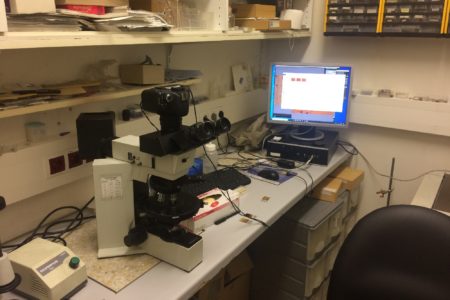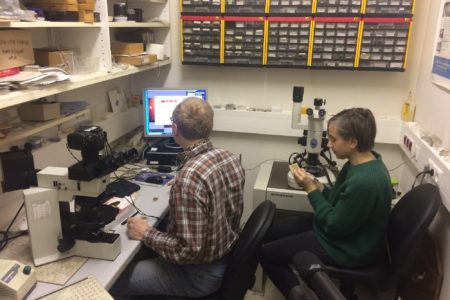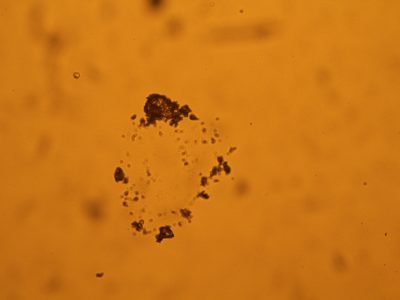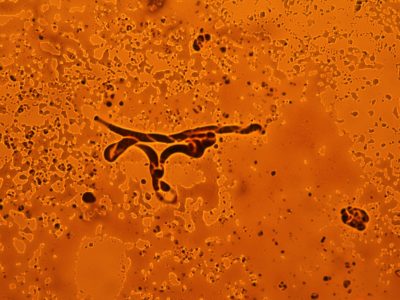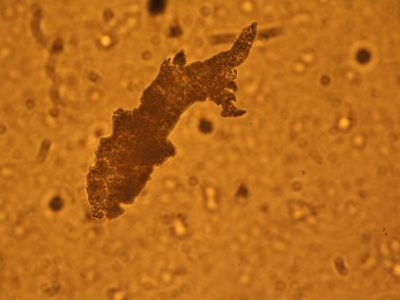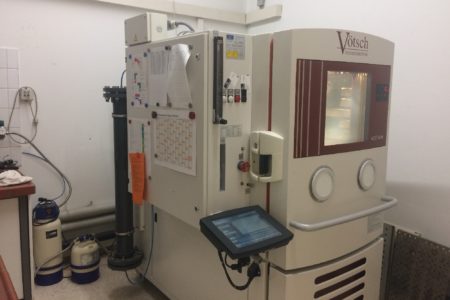Experiment II, Vienna, 17 January 2020
Ernst Logar and Monika Vykoukal carried out our project’s second series of experiments at the Lab of the University of Applied Arts together with Leonhard Gruber of the Institute of Art and Technology.
We analysed three different samples of crude oil: one from the Vienna Basin (Austria), Kumkol (Kazakhstan), which is more viscous, and Geisum (Gulf of Suez, Egypt) without condensate (i. e. the water has been separated out of it), which smells of sulphur. We looked at all three samples under the microscope with a range of magnifying lenses, then compared them by colour, smell, and viscosity, and lastly experimented with casting oil in epoxy resin and with cooling oil.
We started our experiments by examining the solubility of crude oil. In order to examine the samples of crude oil under the microscope we fixed a thin layer of crude oil between two glass plates. In the sample from the Vienna Basin we observed dirt and suspended materials. We discussed how we could find out more about how old the ‘patch’ is and how long this matter was in the oil?
In the Kumkol sample we could see air bubbles between the oil and glass plate, because it is more viscous. We zoomed in on a dark shape, which looked organic, a little like a curled stem or leaf. All we can do with the microscope is to see that something is in the oil, but we cannot determine exactly what it is by looking at it. We can, however, attempt to recognize its general structure.
We also wondered what the parameters for distinguishing crude oils from one another are. Considering their color, the three samples reveal distinct shades of yellow and orange under the microscope, due to their different components. We can also distinguish them by color, smell, and viscosity. Kumol smells the sweetest, Vienna Basin medium, and Geisum sour.
We then attempted to cast oil in epoxy resin. The oil stayed on the surface of the liquid resin. We then tried to see what happens if we freeze it. For this we put some of the Kumkol sample in a small plastic container and cooled it down to – 25 ºC in the laboratory cooling machine. The oil sample did not freeze, but got more viscous (semi-fluid).
In our discussions we also contemplated how the energy contained in a certain amount of oil could be determined by analysing its components or burning it.
experiment | Vienna | Vienna Basin | Kumkol | Geisum | microscope | colour | smell | viscosity | epoxy resin | cooling
